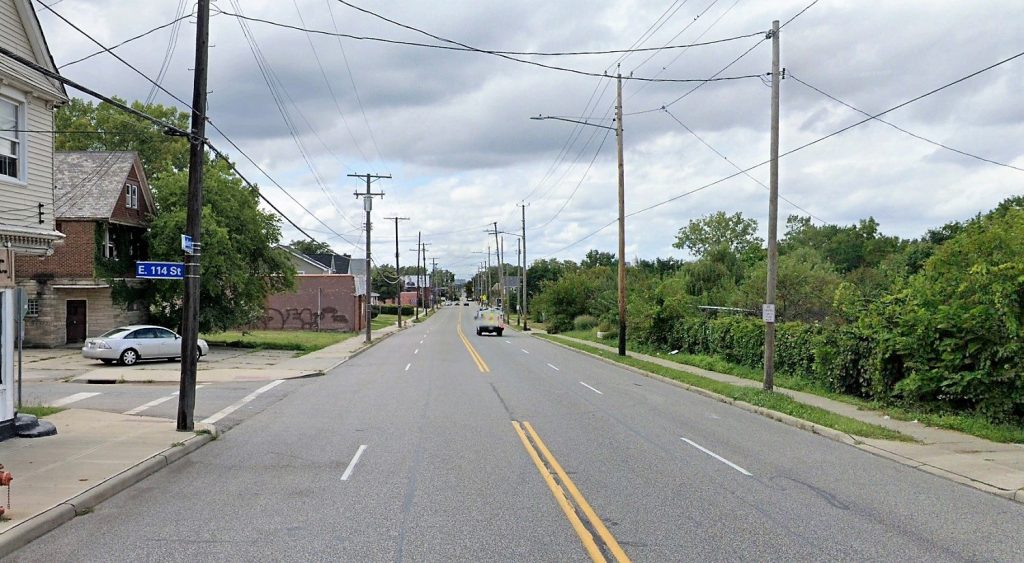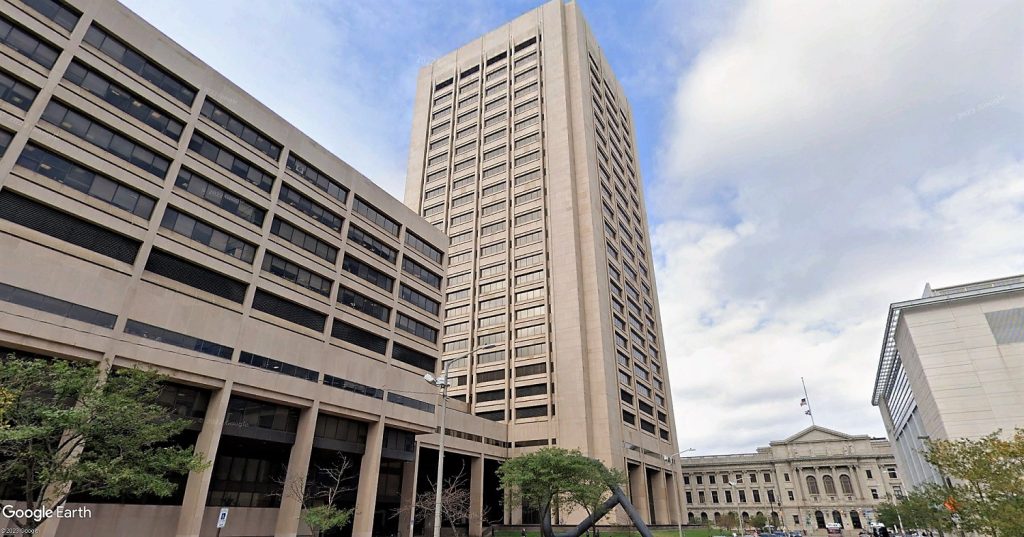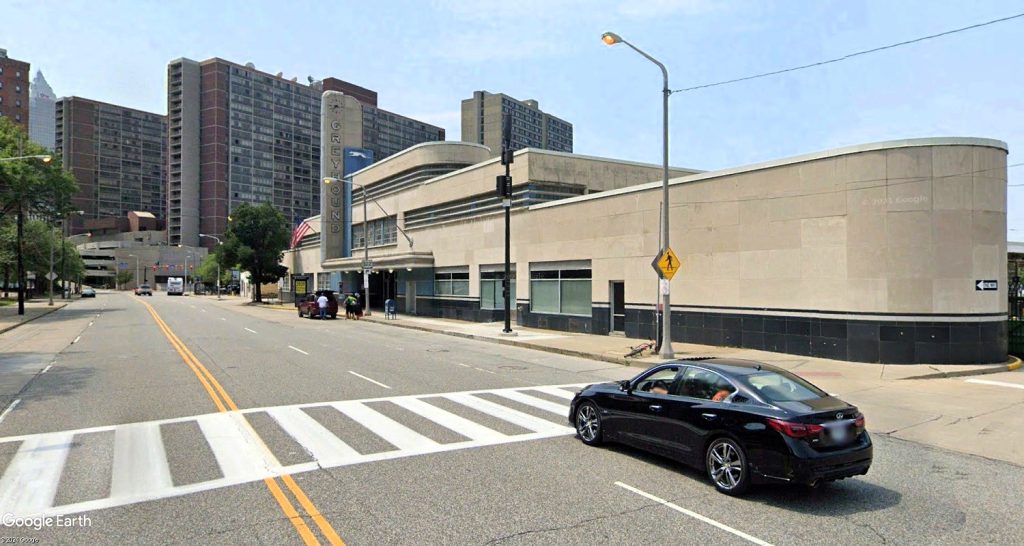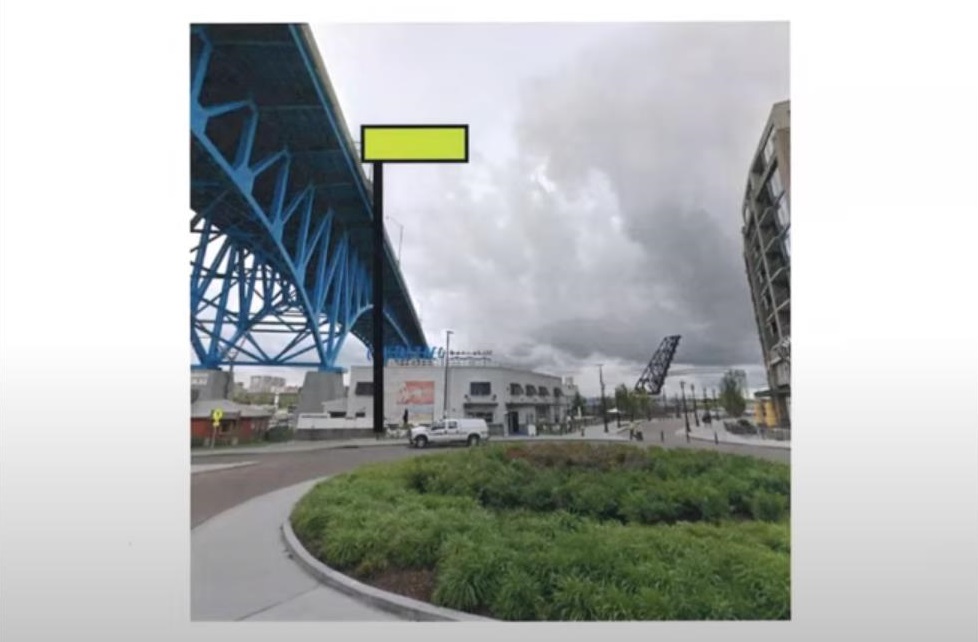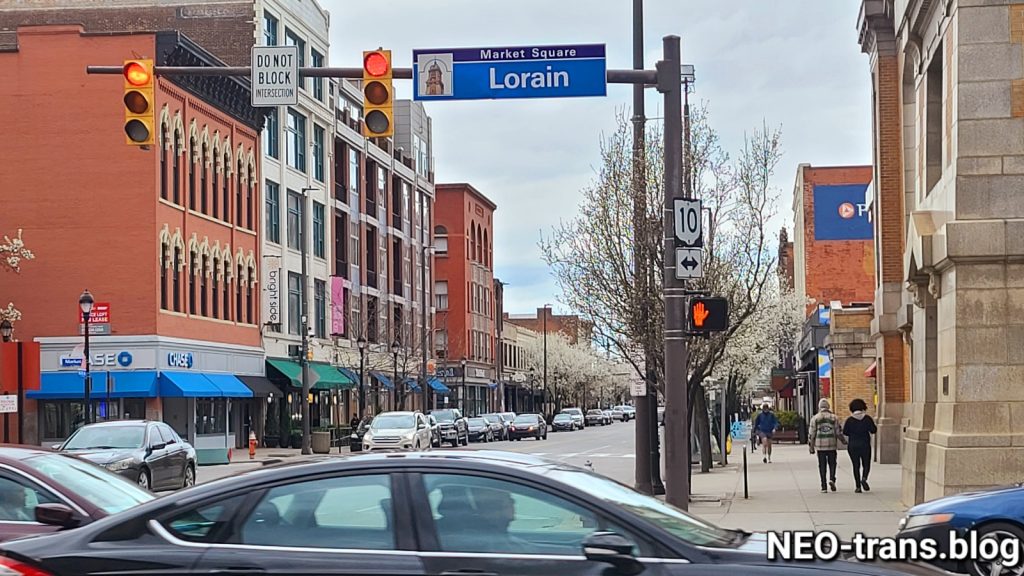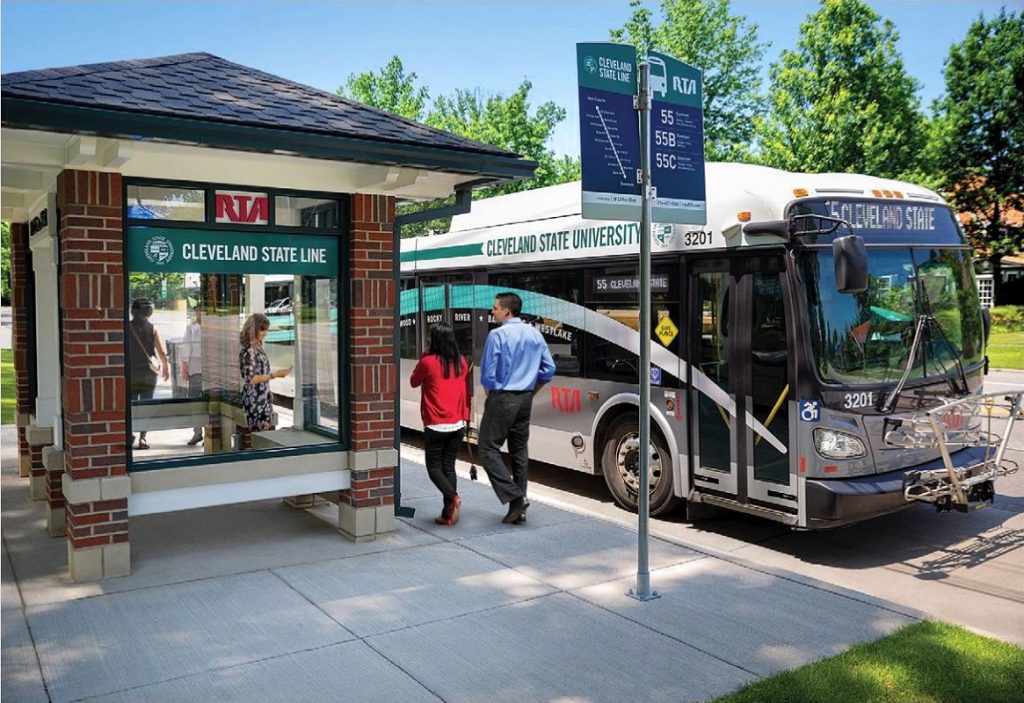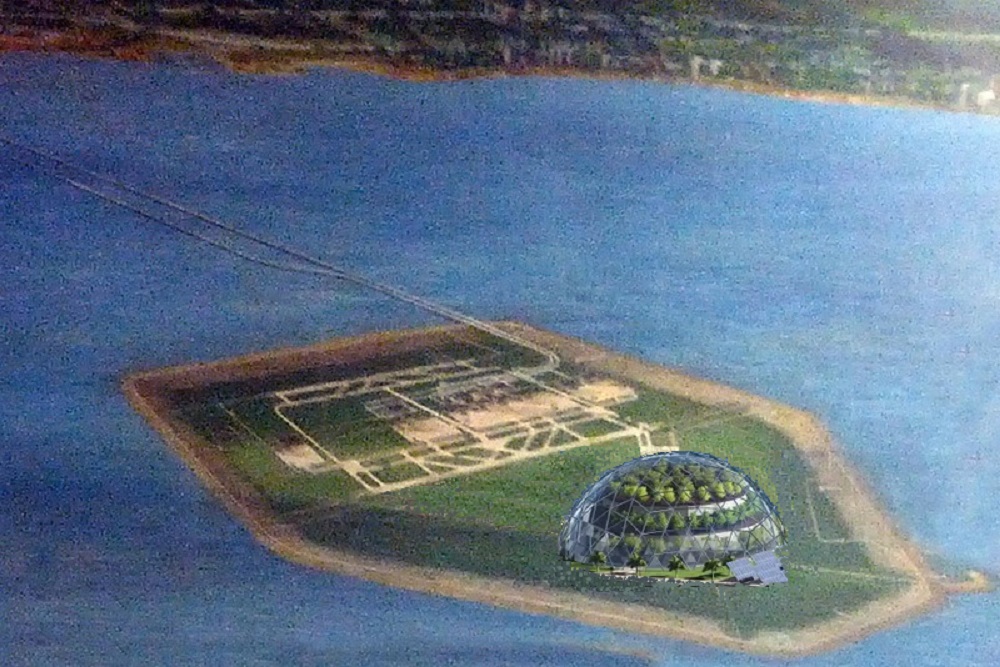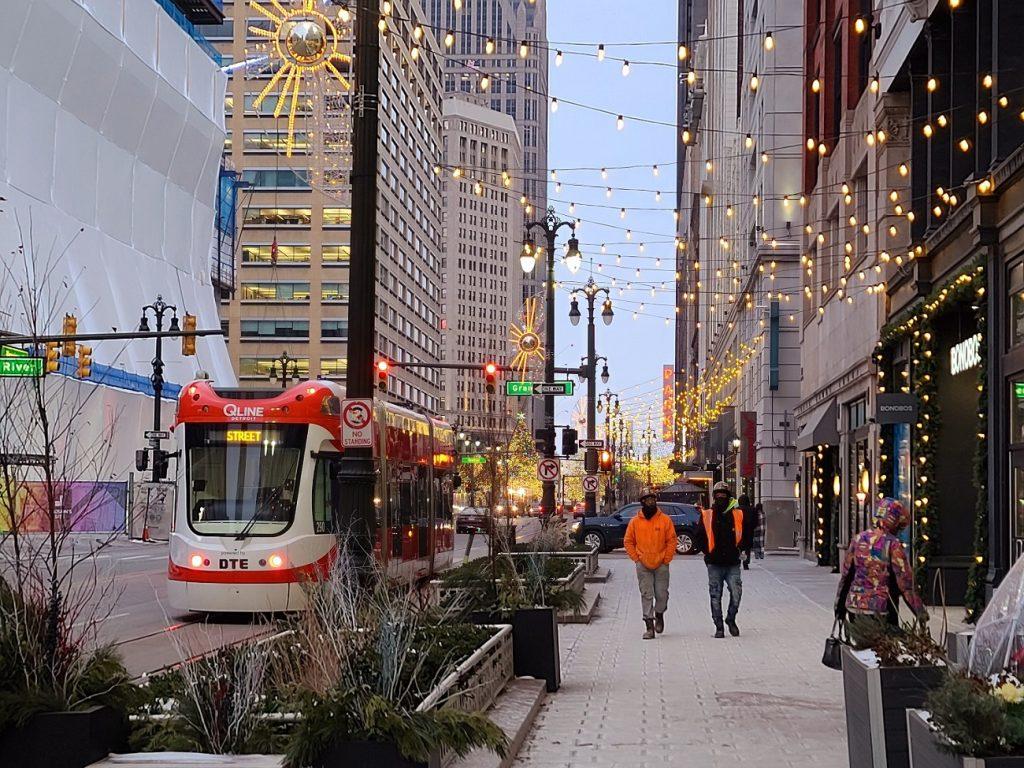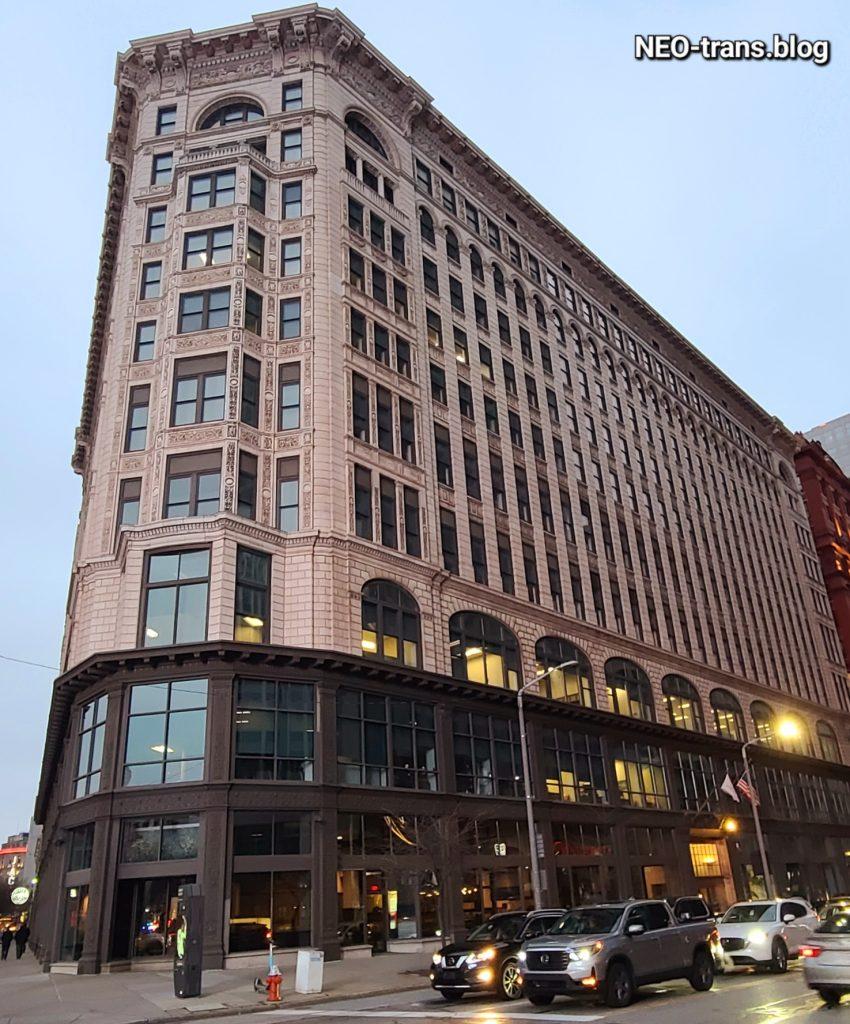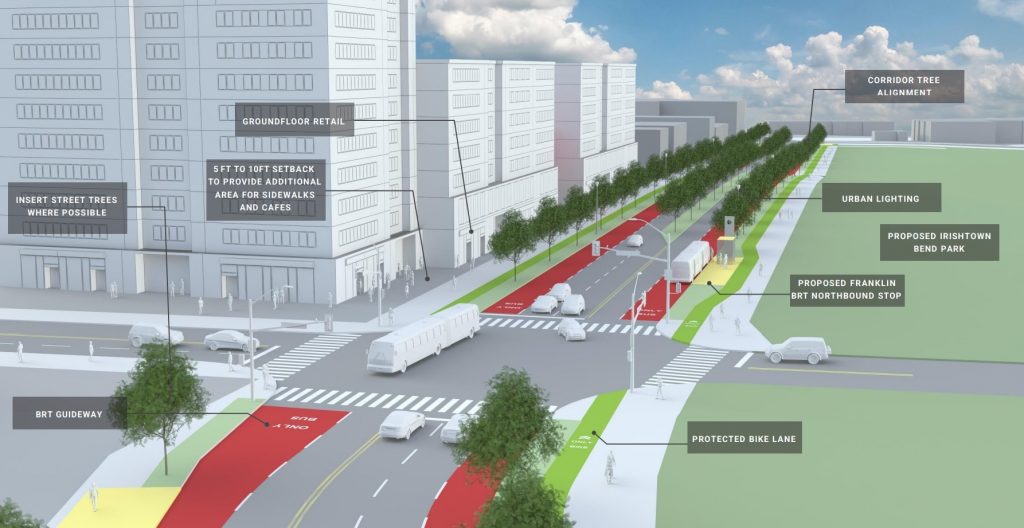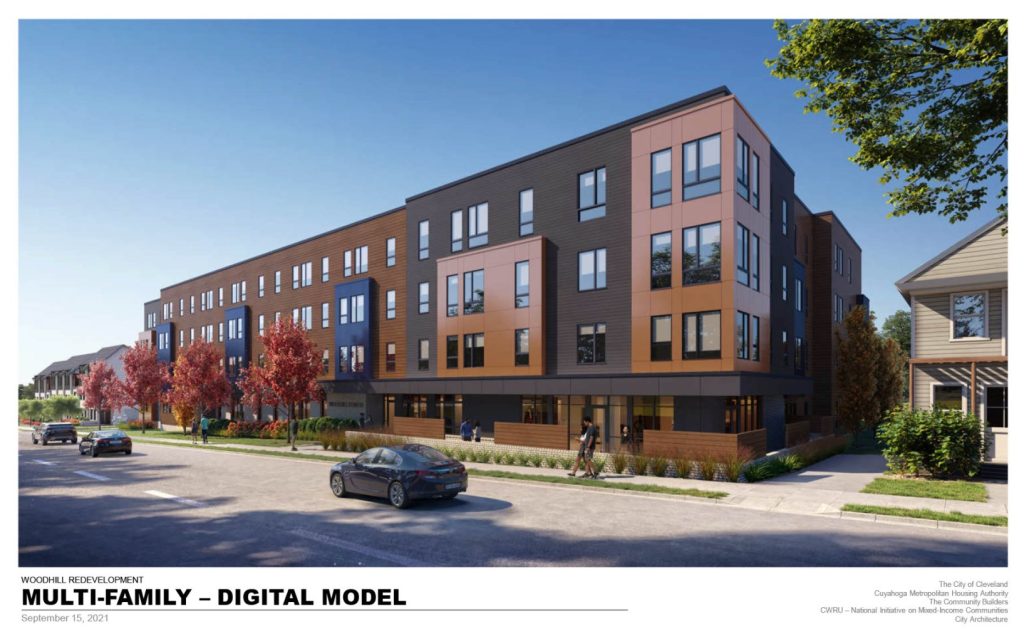
Woodhill Center East, a 58-unit multi-family residential building in the foreground and 19 rental homes in the background, are rising at 11305 Woodland Ave. But their construction costs are also rising as a result of inflation and other pandemic-related disruptions. An additional $10 million in federal funds were awarded to cover those costs (CMHA). CLICK IMAGES TO ENLARGE THEM.
$10 million to cover inflationary cost hikes
To cover rising construction costs resulting from inflation and other pandemic-related disruptions, the U.S. Department of Housing and Urban Development (HUD) has awarded $10 million to the Cuyahoga Metropolitan Housing Authority (CMHA) and the City of Cleveland for the Woodhill Homes Transformation Plan. The funding is from a Choice Neighborhoods Supplemental Funding Grant to further support the development of replacement housing in Cleveland’s Buckeye-Woodhill neighborhood. HUD awarded similar funds to 15 other current Choice Neighborhoods Implementation Grantees to address their pandemic-related disruptions as well.
“This additional Choice Neighborhoods grant for Buckeye-Woodhill is not just supporting a building, it is an investment in the entire neighborhood and its residents,” said Cleveland Mayor Justin Bibb. “We are grateful to (HUD) Secretary (Marcia) Fudge for her leadership and to HUD for its ongoing commitment to the revival of Cleveland’s southeast side.”
In 2021, HUD awarded a $35 million Choice Neighborhoods Implementation grant to CMHA and the City of Cleveland in partnership with The Community Builders Inc. (TCB) of Columbus to support the Buckeye-Woodhill Transformation Plan that will replace CMHA’s aging 83-year-old, 487-unit Woodhill Homes on Woodhill Avenue. The Choice Neighborhood Implementation Grant ensures that equitable neighborhood development in Cleveland becomes a reality in this southeast Cleveland neighborhood.
“I’m excited for the future of the Buckeye-Woodhill transformation and this new HUD grant will help ensure the project moves forward,” said Council President Blaine Griffin. “I’ve fought to ensure the city provides needed funding to make this transformation a reality and am excited that two phases are already under construction. I also want to thank the partners involved and know that the residents are as excited as I am about the future in the neighborhood.”
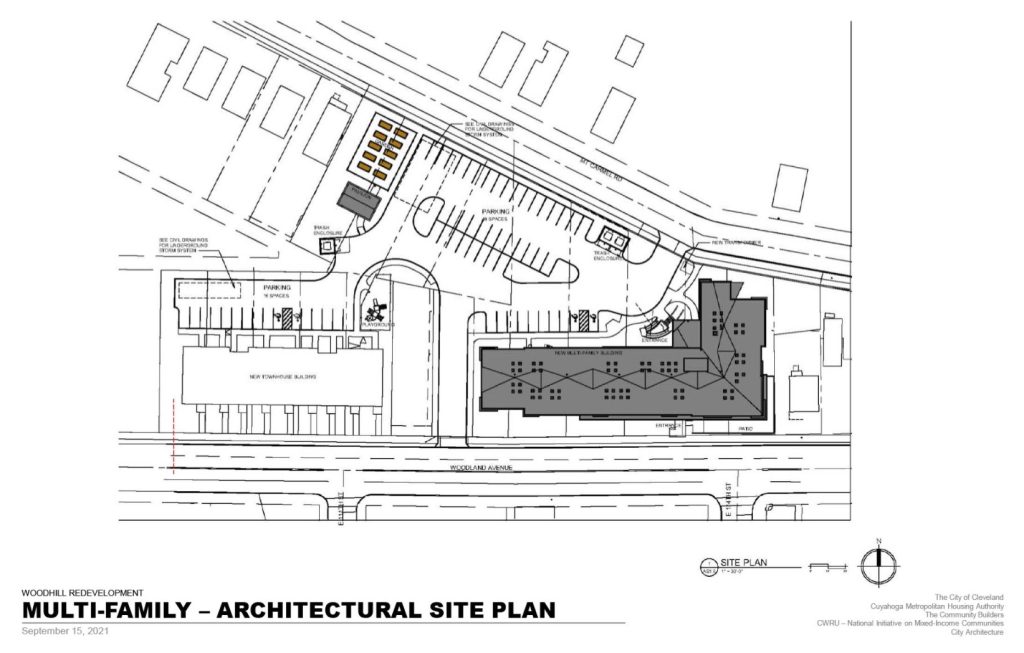
Woodhill Center East features a 58-unit apartment building (shaded at right) as well as a 19-unit townhouse development to the left, or west of the apartment building. At least 58 of these 77 units will be reserved for existing Woodhill Homes residents who will be relocated while the existing Woodhill Homes public housing complex is replaced with modern housing (CMHA
“This is great news for this transformational neighborhood project,” Ward 4Councilwoman Deborah Gray added.
The Choice Plan is redeveloping Woodhill Homes into high-quality, mixed-income apartment buildings that meet high-quality health and environmental standards. The redevelopment, which is taking place in six phases, will include approximately 372 homes and public amenities such as outdoor gathering spaces, recreational fields, and playgrounds.
Two phases are currently under construction. Most recently, in January, construction began on Woodhill Center East, 11305 Woodland Ave., adding 77 affordable apartments. Marous Brothers of Willoughby is the general contractor of the project, that was originally budgeted at $33. 4 million. Woodhill Center East will have a 58-unit apartment building and a 19-unit townhouse development right next door as part of CMHA’s redevelopment efforts.
The first phase of development is Woodhill Station West that started construction in July, 2022 at 9511 Buckeye Rd., across the street from the Greater Cleveland Regional Transit Authority’s Woodhill rapid transit station. Woodhill Station West is a 120-unit, mixed-income apartment complex in 9500 block of Buckeye Road. This phase, located across the street from the Buckeye-Woodhill light-rail station, represents a $46.4 million investment in a long-neglected neighborhood. A later phase of this development called Woodhill Station East could see construction by the end of this year, immediately east of the first phase. That is not to be confused with Woodhill Center East.
“We are very grateful for this grant from the Department of Housing and Urban Development that will allow us to continue on our path to develop much-needed quality affordable housing which all can agree is an essential element of neighborhood revitalization,” said CMHA CEO Jeffery K. Patterson. “CMHA will continue to build on successful collaborations, strong partnerships, and valuable community engagement to create opportunities of this nature throughout our community.”
“The Community Builders remains committed to the promise of a stronger Woodhill neighborhood, ensuring that Cleveland residents and their families have accessible and affordable housing options,” said Jeff Beam, regional vice president of The Community Builders. “On behalf of our organization, I extend my deepest thanks to HUD for its support, and the many partners and leaders who made this development possible, including CMHA, the City of Cleveland, Council President Blaine Griffin, our funding partners, and most especially the residents of Woodhill.”
Choice Neighborhoods Implementation Grants assist in the redevelopment of severely distressed HUD-assisted properties into mixed-income communities. The program has a three-pronged “Housing, People, and Neighborhood” approach that not only includes the redevelopment of distressed properties, but also provides support to housing residents related to health, education, and income, while simultaneously investing in neighborhood improvement projects that promote economic development and private investment. Since the program’s inception, the Choice Neighborhoods program has seen 11,000 new mixed-income units built across 44 cities. More than 32,000 units are planned.
END

